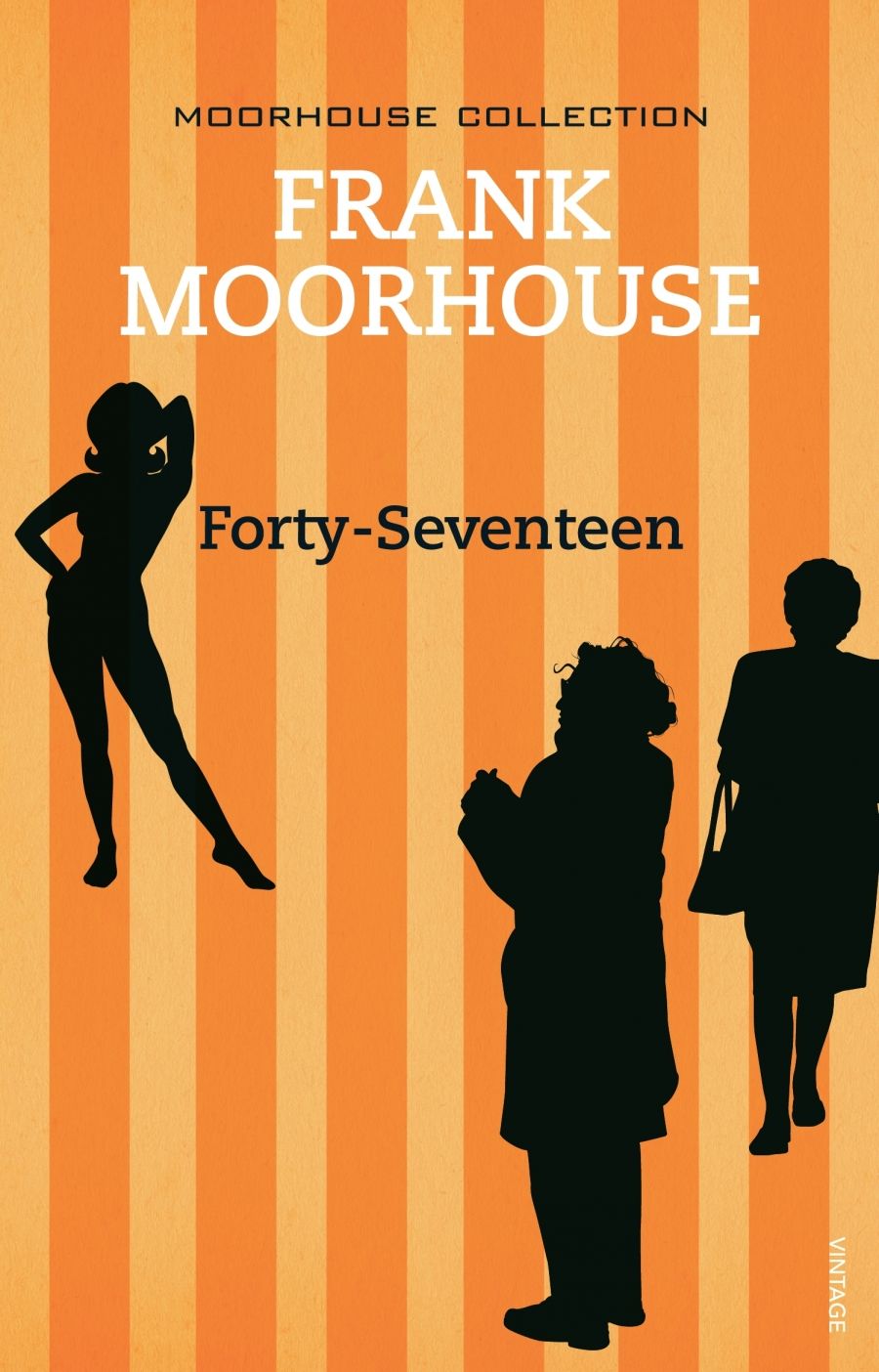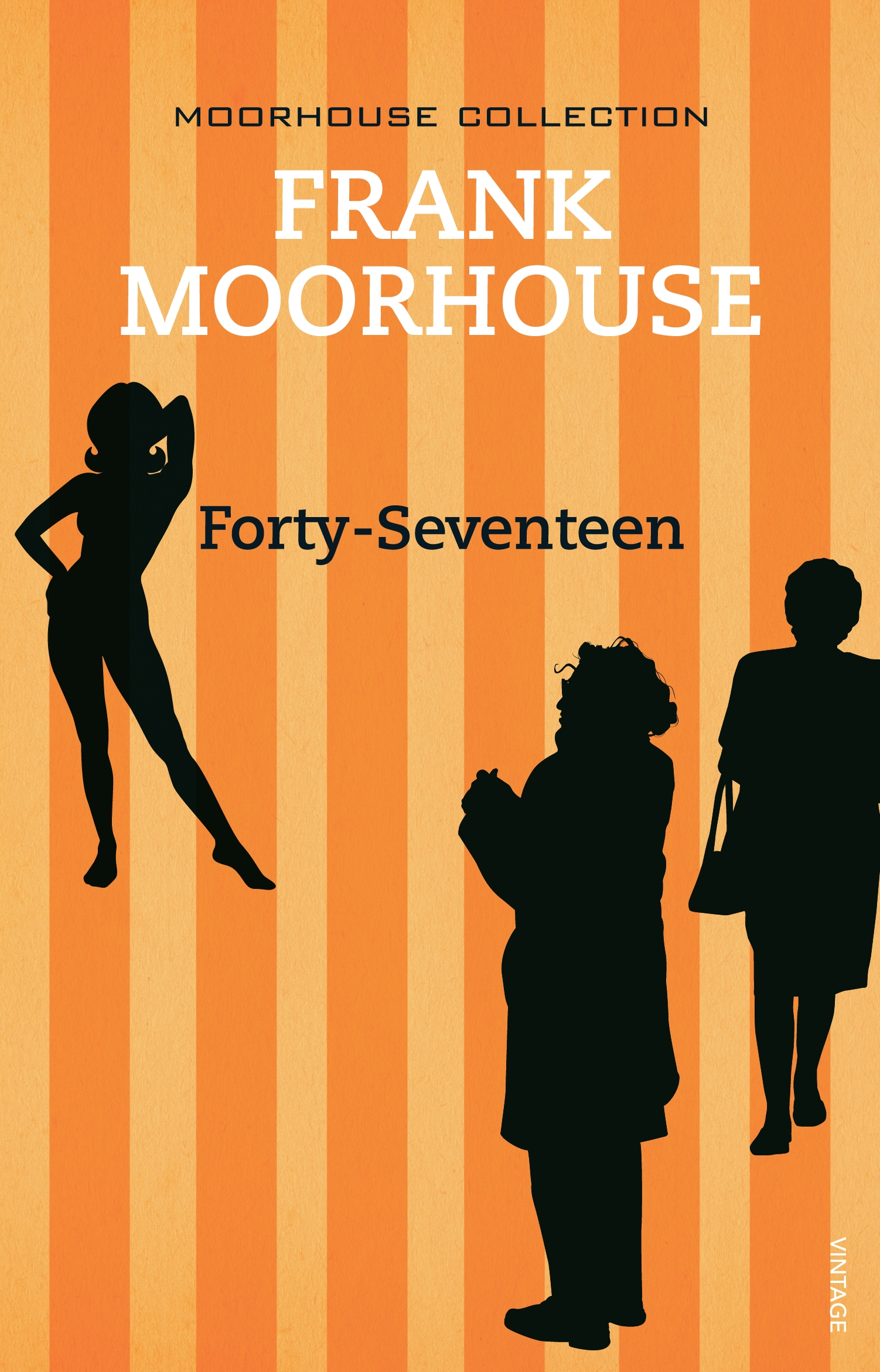
- Free Article: No
- Contents Category: Fiction
- Review Article: Yes
- Article Title: Self-knowledge and the male narrator
- Online Only: No
- Custom Highlight Text:
Australians are said to be an unreflective artless lot, not given to intensive self-examination in the personal or political sense, living lives of stoical self-denial or frank hedonism. This national ideology of course assumes that ‘Australian’ is synonymous with ‘male’, and our literary ‘tradition’, whose quintessential form is the short realist narrative, carries that ideology.
- Book 1 Title: Forty-Seventeen
- Book 1 Biblio: Viking, $29.95 hb, 184 pp
- Book 1 Cover Small (400 x 600):

- Book 1 Cover (800 x 1200):

Now, after a long writerly silence, Forty-Seventeen, Moorhouse’s latest ‘discontinuous narrative’ is expressive of all of these influences. A series of linked stories, most previously unpublished, weave an intricate, self-reflexive pattern that nevertheless reaches out, drawing on elements of the Lawsonian tradition. And it becomes part of that ‘dialogue’ Moorhouse has written of; a dialogue with his earlier writing, one developed through his ‘pursuit of form’, a dialogue with readers and with other writers’ work.
Forty-Seventeen uses a single, subjective, almost anonymous and characteristically male narrator who tells through the stories much of his character and life, allowing insights into Australian life, as well as into the nature of existence and of writing fiction. This narrator, nearly always referred to in the third person, is an urban, cosmopolitan man who grew up in a NSW country town; who struggles to achieve as a writer; who is involved in the politics of nuclear energy and the non-proliferation treaty; who believes he fails at living; who fears yet desires both love and death; who drinks too much, whores too much, fetishises sensuality, and who identifies with and seeks the meaning of his life through his family history, which is in part Australia’s cultural history.
Intensely neurotic, unlike that popular idea of what it is to be Australian, the narrator is nevertheless of the ‘tradition’: he ‘learned his masculinity’ (p.29) in the bush as a boy. Two stories in particular interrogate this motif. In ‘From a Bush Log 1’and ‘2’ the narrator seeks the meaning of the bush and his maleness while the narratives ironically expose both the motivations of his quest and the wider meanings of ‘bush’ and ‘masculinity’ as representations of Australia. Just forty in the first story, the narrator goes into the bush of his childhood at Christmas with Belle, watching her for signs ‘of the creeping hysteria and dread which the Australian bush could bring about’ (p.24). Unaffected by his Clarkian projection, Belle questions his reason for being there. His reply: ‘I go into the bush for raw, unanalysed sensory experience’ (p.24) is at once funny and serious, and is packed with references, personal and national, social and literary, that continually criss-cross the stories. Belle refuses her part in the heroic Australian romance the narrator seeks to create, and there’s a final, mutual recognition of his version of ’80s angst as she says: ‘I feel quite happy about it. Hemingway’ (p.31).
A second, abortive bush trip, taken alone to erase the memory of the first, only imprints it more deeply. It’s all complicated, in a way characteristic of this collection, by the reference at the end of ‘The Great-Grandmother Replica’ to the narrator’s final understanding of ‘why he’d taken her into the heartlands of his fortieth birthday’ (p.22). This chronologically subsequent insight takes place at an earlier point in narrative time, since ‘The Great-Grandmother Replica’ is placed prior to the ‘Log Book’ stories in the volume.
Lacking a linear structure, the collection is held together by subtle, elliptical connections. Through memory and conversation, the stories range over historical and space. Small narrative sections, each a story segment in itself, are related by recurring characters and recurrent preoccupations — with anarchy and decadence, failure and success, eroticism and lust and guilt, with the nature of memory and the potential of writing. The typically spare prose style, devoid of description and com-posed almost wholly of direct and indirect speech is extraordinarily effective.
In tone and technique, these stories are often intensely reminiscent of Woody Allen’s narratives. For instance, some of the stories adopt the device used to such effect by Allen in ‘Hannah and Her Sisters’, introducing each narrative segment with a phrase that acts as an integrated subtitle. And this collection has less of the masturbatory quality of some of Moorhouse’s earlier writing. Here, like Allen at his best, a balance is achieved between the yearning, self-massaging male ego of the narrator and the wit, self-deprecation and self-knowledge of the narrative voice.
Forty-Seventeen'^ stories are concerned with human relationships, most centrally with sexual relations. Unlike many male Australian writers, Moorhouse is at case writing about the way people understand and express themselves sexually. Yet male fantasy seems to have produced a stereotypical image of extreme youth and apparent purity in the women the narrator lusts after — his ex-wife Robyn, wed when she was seventeen; Belle his companion in sluttishness who’s older, but has the porcelain skin and ingenuous eyes of a child; the seventeen-year-old girlfriend whose youthfulness is insisted on by the narrator for the special frisson gained in the meeting of seventeen and forty.
But although there is a sometimes boring and questionable insistence on the women’s youth, beauty and physical desirability, each (including the great-grandmother whose life haunts the narrator and who embarked on a youthful career as a whore) is intelligent, jokily self-reliant, and often teaches rather than being taught by the male narrator. And the narrative games Moorhouse plays here are irresistible. The word ‘slut’ is pushed through repetition, anecdote, incident and example into a space quite other than the one it usually occupies.
This is a stunning collection. It demands intellectual and emotional response; it says much about postmodern writing; about contemporary Australian life and about the myths and ideologies of that culture. Most of all; it’s a terrific read. More please, Moorhouse.


Comments powered by CComment